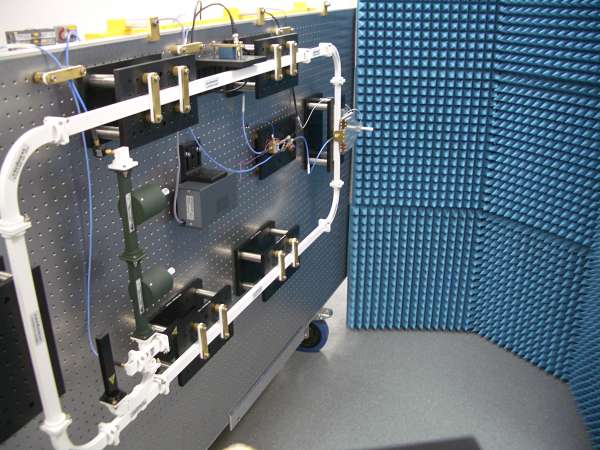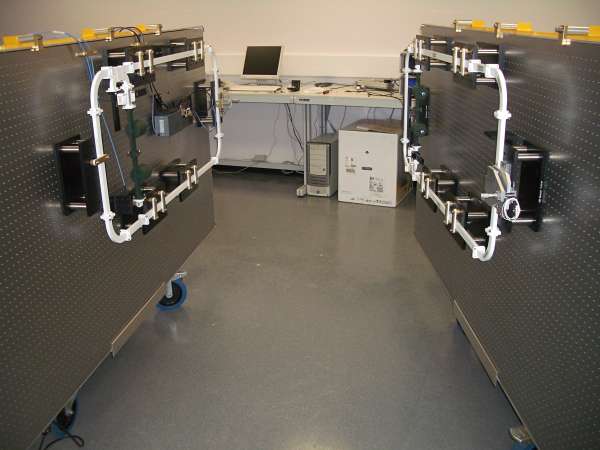High Frequency Gravitational-Wave Detector
The group has pioneered the development of techniques for observing gravitational waves at very high frequencies, in the Mega Hertz to Giga Hertz range. Radiation at these frequencies is expected from certain high energy processes in the very earliest moments after the Big Bang or from the decay of cosmic strings. Two detectors are in operation in the Physics Department basement working at 100 Mega Hertz and they have demonstrated the ability to perform cross correlation measurements which is the proposed way of identifying the ransom cosmological signal against the background random thermal noise.
The equipment uses microwave techniques to search for the rotations expected ( Cruise A.M. 1983 Mon Not R Ast Soc 204, 485) when a beam of electromagnetic radiation travels in the presence of a gravitational wave. The detector uses a resonance condition ( Cruise A.M. 2000 Classical and Quantum Gravity 17, 2525) to enhance the signal on successive circuits of a microwave loop. Current sensitivities of about 10-14 h per root Hz have been published ( Cruise A.M. and Ingley R.M.J. 2004 Classical and Quantum Gravity 22 No 10 S497 and procedures for the alignment of the detectors have been proven on the prototypes ( Ingley R.M.J. thesis University of Birmingham 2005 )
The next stages in the development of the detector are:
- Improving the low frequency feedback loop to widen its control band
- Improving the inter-detector screening to reduce the common mode interference
- Extending the data acquisition times to allow for continuous operation
- Developing a microwave extraction probe which is sensitive to rotated modes which are proportional to Sine ( rotation angle)
All these stages are funded in terms of the equipment available and the facilities required. When the first three steps are complete the detector will make a scan of the gravitational wave sky at 100 MHz.

